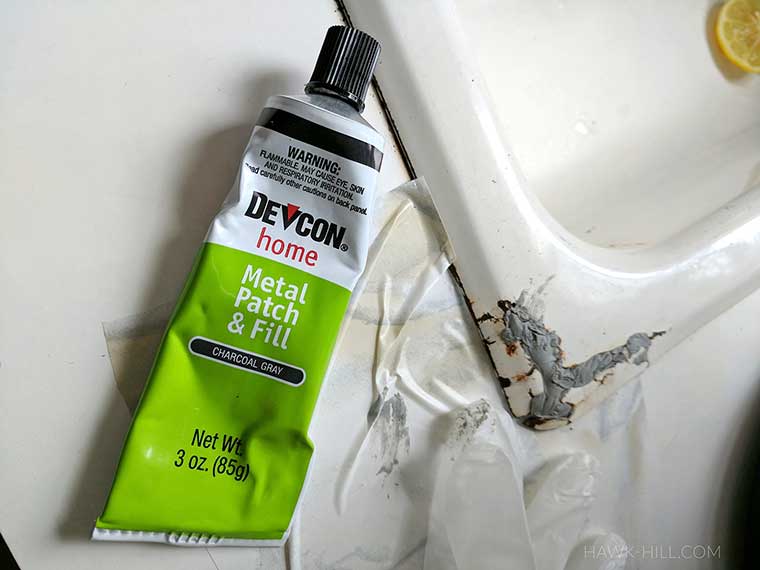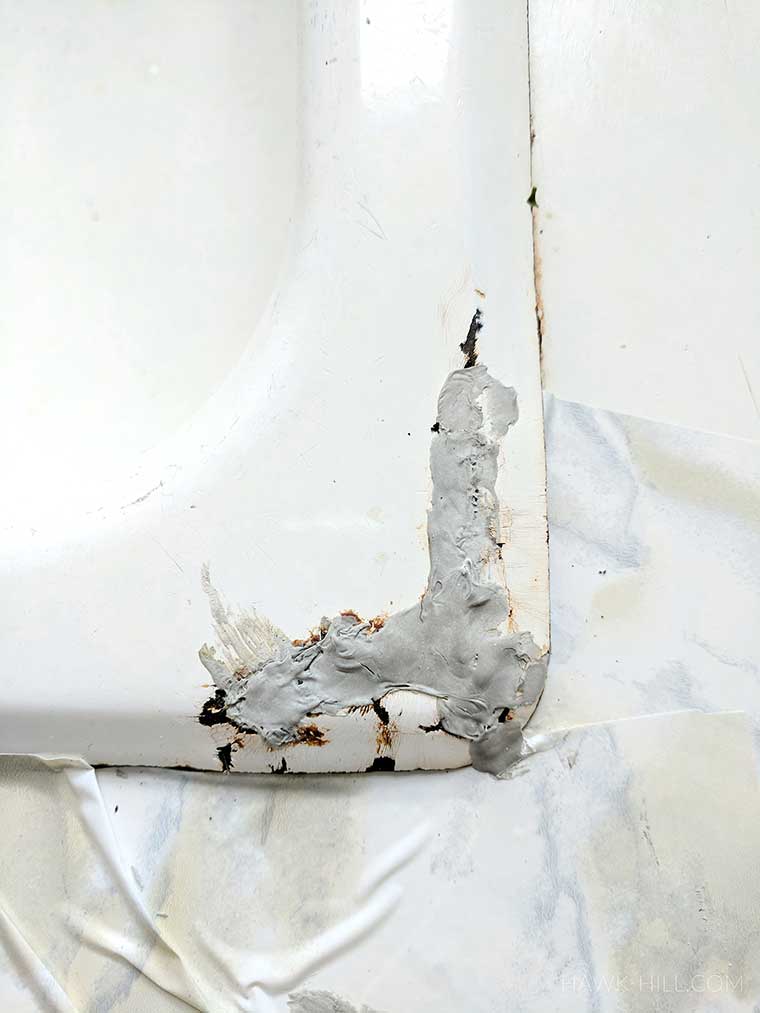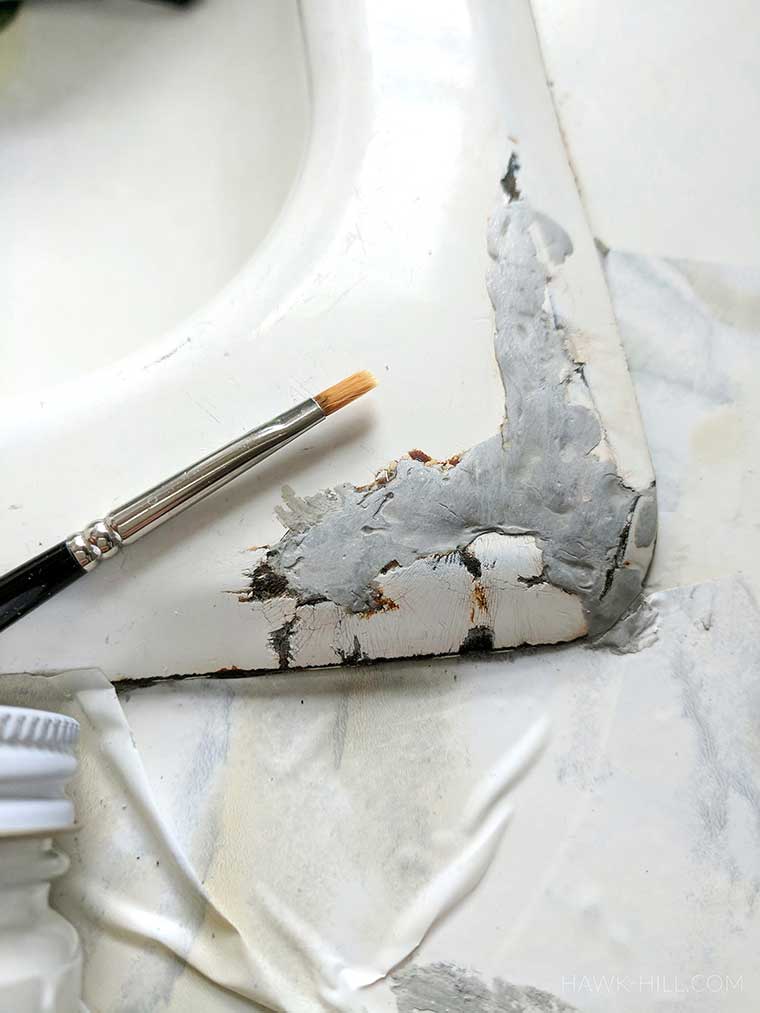Step 3: Insert Metal Filler
Before the outside could be refinished, I needed to fill the gaps in spaces where rust had eaten through the porcelain and cast iron. Thankfully, I wasn’t the first person to need to patch and fill corroded metal – and this Devcon epoxy metal filler made the process easy. Working in about three stages (I had to allow each layer to dry before I added another in order to fill this very deep gap) I was able to completely fill the gaping hole in this rusted cast iron sink.
This metal patch is as tough as metal once it has dried, and it will be equally waterproof once the epoxy appliance paint is added. It’s a fantastic option for an easy DIY fix for a vintage cast-iron sink.

How Do you Remove Rust From An Iron Sink?
Even though taking off the peeling orange coating from your cast iron sink might seem difficult, it needn’t be particularly difficult. Cast iron sinks typically have a thick layer of enamel coating to prevent the iron from rusting, so the rust typically only affects a small area of the sink.
The task might take longer in some cases because you may be dealing with an old cast iron sink that has been covered in rust for years. To see how simple it is to remove rust from your cast iron sink, read through the following techniques before you become too overwhelmed.
You might be able to remove any minor rust in the chipped area by lightly sanding it. It doesn’t hurt to try sanding the rust first before using a chemical because thicker rust might not lift as quickly. Here’s what you’ll need:
Use 000-grade sandpaper for sanding the rusted area gently. To remove the rusty particles, go over the area three to four times with sandpaper. Alternatively, if the rusted area is in a difficult-to-reach area, use a wire brush to achieve the same sanding effect. Though you risk leaving scratches on the sink’s finish if you scuff areas near the rusty spot.
Use a hand vacuum to remove the minute rust particles after you’ve finished sanding.
Try food-grade citric acid if sanding the rust doesn’t work. Rust that is stuck in tiny crevices or stubborn rust spots can be removed with the help of this substance. If you use this technique, make sure to first sand down as much as possible. Here’s what you’ll need:
Create a loose paste by combining a tablespoon or so of citric acid with enough hot water. Give it some time to work after applying it to the rusty area. To help remove corrosion from the sink’s surface, gently scrub the rusty area with an old toothbrush. It might take a little elbow grease to get the rust to lift, but don’t scrub too hard or you risk damaging the sink’s surrounding area.
When the citric acid has finished its work, remove any residue with clean water and a soft cloth. To prevent the formation of new rust, make sure the area is thoroughly cleaned with water and dried.
You can use white vinegar for baking, cleaning, deodorizing, and a lot of other things. It is a miracle worker for many situations. So it shouldn’t come as much of a surprise that it works wonders on rusty sinks. Here’s what you’ll need:
Start by diluting vinegar in a spray bottle. Fill the bottle with white vinegar until it is halfway full, then top it off with water. Spray plenty of vinegar solution on the rusted area, and then let it sit for about 30 minutes.
After some time has passed, scrub the area with an old toothbrush or a wire brush. This will assist in removing rust particles that are still clinging to the surface of the sink. After you’ve finished cleaning, thoroughly rinse the area with fresh water, and then wipe it dry with a soft cloth.
Step 4: Sand and Finish Hardened Cast Iron Filler
When the metal filler is finished drying (curing? ), file it to a smooth finish. After drying, the color will lighten and resemble something like this:

Begins sanding the metal filler down to a smooth finish using progressively finer sandpaper. I’m gonna make a DIY confession here: I rushed this portion of the job and I regret it. I didn’t have the range of sandpaper needed to sand down the bumps and add an ultra-smooth finish. But I was impatient, so I continued to the next step.

